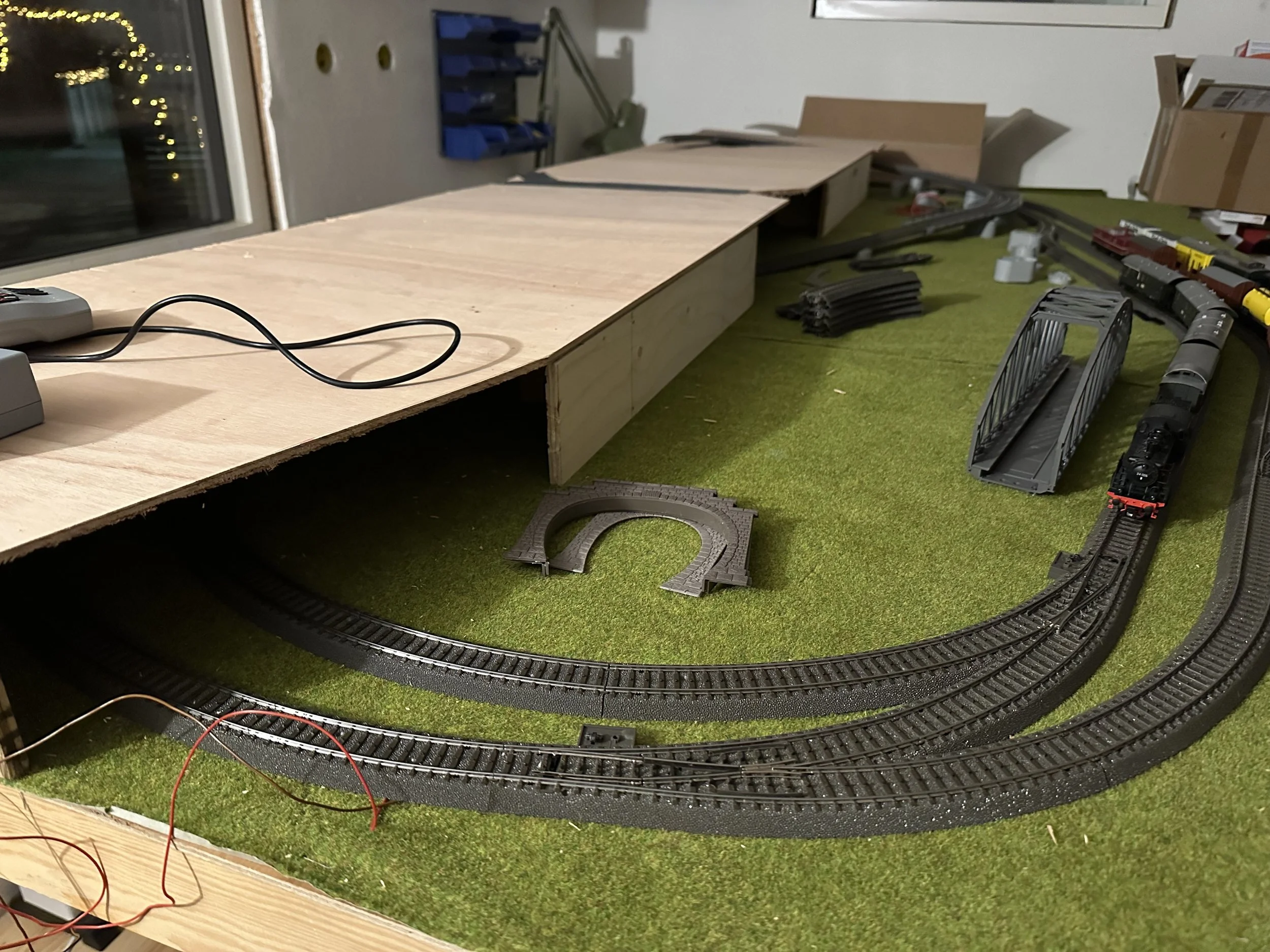The joy of agile
With the design set in wood, I can now start build a new layout.
I start with a recap of the last article, just enough high-level
Size
Scale
2-rail or 3-rail system
Analog or digital train control
Time period and country/region
Prioritization, trains and/or landscape
Budget and/or time
Size is 240x120 cm due to limitations of space, and standard size for birch plywood board.
Scale is H0 due to everything i have, e.g. technical debt.
3-rail system with Märklin C-track as this is what I have and makes track layout simpler. Also technical debt.
Digital train control as I have many trains to run the same time.
Timeperiod is era IIIb in Western Germany (FRD), e.g. 1960-1967. A time period with stream, diesel and electric locomotives. My father lived in Germany partly during that time, so there is a personal connection as well. Even more technical debt.
Priority is running trains, with some landscape, even if landscapes was more important during my childhood. May change over time.
Budget is less of constraint compared to time.
The baseboard
The baseboard is the platform for your model railroad, and were everything start. The physical dimensions set the limits of how much you can expand your layout in space.
This means that within those ramifications we can be agile.
Hold your horses
I didn’t say it's easy to build a complex layout, even if we have a couple of design guidelines.
Remember the layout on the kitchen table?
We could run two short trains, with a third locomotive at the shuttle yard.
The goal here is to have ten trains with more than fifty cars, plus shunting locomotives, running at the same time on the layout. Both longer passenger trains and freight trains. Not forget a bit of a landscape.
How do you solve this problem?
More tracks is the obvious answer, but we still have the limited size. There is only one answer to this problem, and it is building in layers above each other, where some tracks are hidden and some are visible.
You may ask, is it doable?
To quote Pippi Longstocking, “How should I know, when I've never tried?”
Step by step
First of all, I got a track planning book and I begun to build some of the layouts there to get a feeling for the craft and run trains to learn how manage digital control.
Then it was time to create something new, my own layout. Not starting from scratch, I took inspiration from two different layouts and merged them together.
As I didn't have all the tracks for such large large layout, I used a CAD program to design the track plan, so I had a shopping list.
The first version of the layout had two layers and I built out a temporary model with more plywood.
Why?
This is a proof of concept where I could test the traffic on each of the two layers, before building any permanent. I also bought parts for digital control of the trains, as the ambition is to have several trains running autonomous.
The last hurdle in the design is the third layer, a shadow station. Something I never done before. The purpose with this is to have a parking lot for trains waiting to run on the visible parts of the layout.
Here the benefit of CAD software was really high, as we model in 3D and the physical layout is complex with grades, tunnels and lots of tracks. Not forgetting all sensors for digital control.
Next step is a final test of the tricky part of the lowest layer, the helix to the visible layer. You see it in the lower right corner of the 3D model.
Afters this is time to build the permanent layers and lay all tracks. Then the shaping of the landscape with all buildings can begin.
The caveat was that I had to redo the baseboard to be slightly larger 244 x 122 cm, and creating four sections for easier transport instead of one large piece.
So far, this is the only big design mistakes I did. But because I did the model in an agile step by step approach, with tests part by part, not the full layout, the consequence were not so huge. A few hours of extra work and some extra wood.
So far, budget overrun, but more model railroad and rolling stock faster than I anticipated.
Final thoughts
When you need to do some planing and high-level design, to do something simple as a model railroad, albeit a complex one with some limitations.
Do you really think that you can do a large transformation program without some high-level planning, design and guidelines?
Without experience of doing this before?







